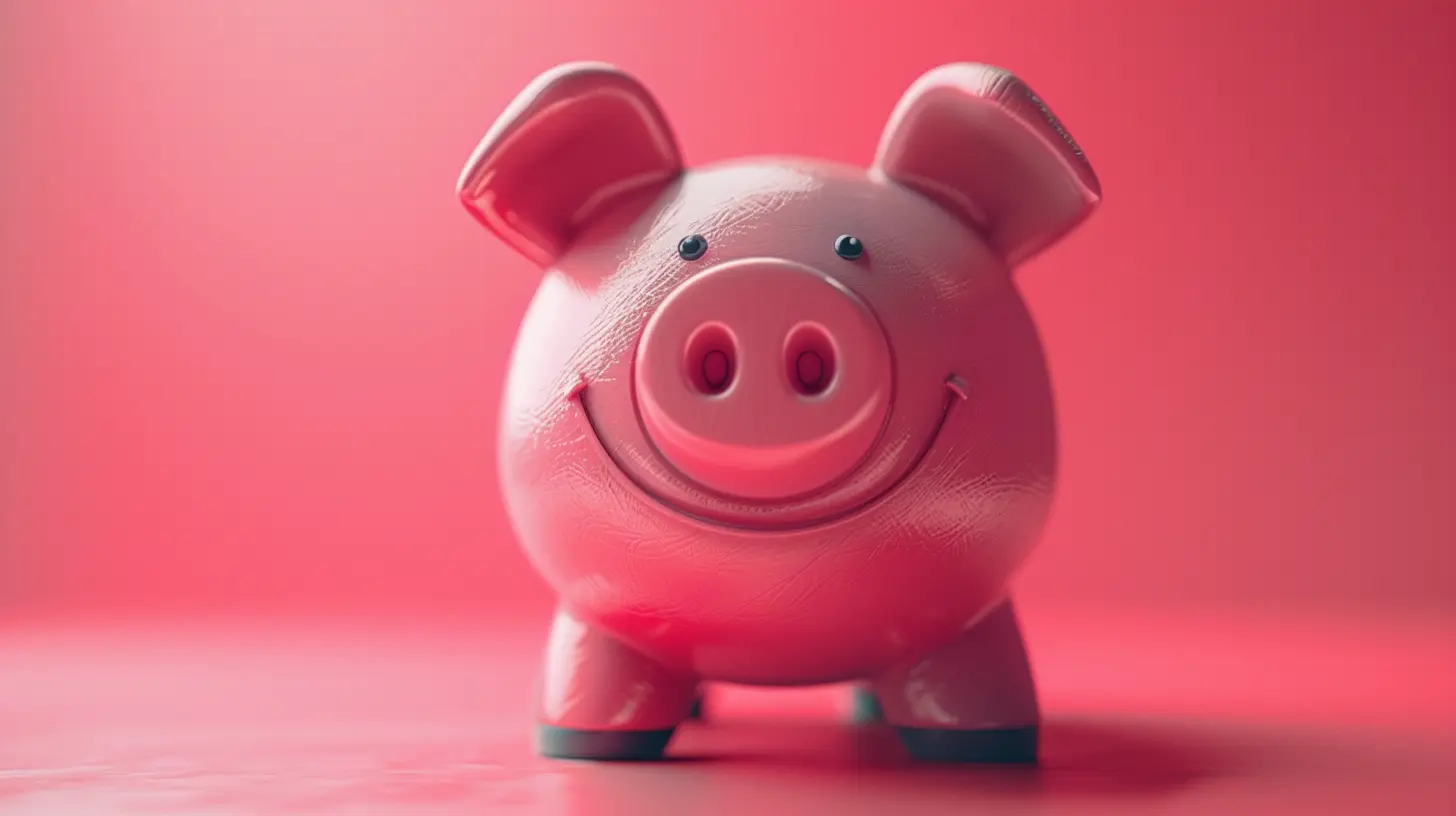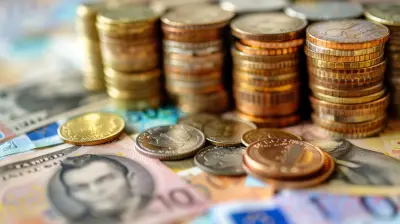Is Your Emergency Fund Too Small? How to Reassess Your Savings
30 May 2025
Let’s be real—your so-called emergency fund might not be cutting it. If your savings can barely cover a flat tire, let alone a sudden job loss, it's time for a serious financial glow-up. Don’t worry—I’m not here to judge. I am here to help you figure out if your emergency fund is hanging on by a thread and, more importantly, how to beef it up before real trouble strikes.

What’s the Point of an Emergency Fund?
Think of your emergency fund as your financial airbag. You don’t always see it, but when life smacks you with an unexpected expense—boom! It softens the blow. Without it, you’re left scrambling, possibly reaching for a high-interest credit card or, worse, taking out a loan that will haunt you for years.And let’s be honest, emergencies don’t announce themselves. Your car doesn’t ask permission before breaking down, medical bills don’t politely wait until payday, and layoffs? Yeah, they don’t come with a two-month warning. Bottom line? If you’re not prepared, you’re setting yourself up for financial chaos.

Is Your Emergency Fund Too Small?
So, how do you know if your emergency fund is, well, pathetic? Let’s break it down.1. You Can’t Cover At Least Three Months of Expenses
Experts suggest having three to six months’ worth of essential expenses saved up. Notice I said essential—not your Starbucks habit or Friday night DoorDash splurge. If you lost your income tomorrow, could you cover rent, utilities, groceries, and insurance for at least three months? If not, that’s a red flag.2. You’ve Been Relying on Credit Cards for Emergencies
If an unexpected bill makes you whip out your credit card faster than you can say “interest fees,” your emergency fund is waving a giant white flag. Sure, credit cards can be a temporary solution, but they’re not a safety net—they’re a debt trap.3. You Can’t Handle a $1,000 Emergency Without Panic
A 2024 survey found that 56% of Americans wouldn’t be able to cover a $1,000 emergency without going into debt. If that number sounds painfully familiar, your emergency fund needs some serious TLC.4. You’re Constantly Dipping into Your Savings
If your emergency fund doubles as your “I really need a vacation” fund, it’s TOO SMALL. The whole point of this stash is to be there when real emergencies strike—not for impulse buys or splurges.
How to Reassess Your Emergency Fund and Fix It
Alright, reality check done. Now, let’s get to work. Here’s how to build a savings cushion that actually has your back.1. Calculate Your Essential Monthly Expenses
Start by listing out your non-negotiable bills—rent/mortgage, utilities, insurance, food, transportation, debt payments. Multiply that by three (at minimum) to see the bare minimum you should have saved.If your number makes you sweat, take a deep breath. We’re not saying you need to hit this overnight. The key is consistent progress.
2. Adjust Your Savings Goal Based on Your Situation
Three months’ worth of expenses is the baseline, but some people may need more:- Single-income households? Aim for six months.
- Unstable job? Push for nine months to be extra safe.
- Dual-income with financial flexibility? You might be okay with three months.
The idea is to personalize your buffer so it works for you.
3. Cut the Fat in Your Budget
Let’s be honest—there’s probably something in your budget that’s draining your financial potential. Here’s how to find extra savings:- Cancel subscription services you barely use.
- Cook at home instead of ordering takeout.
- Lower discretionary spending (yes, that means fewer impulse buys).
This doesn’t mean you can’t have fun—just be intentional about where your money goes.
4. Automate Your Savings (So You Don’t Have to Think About It)
Set up automatic transfers to your emergency fund every payday, even if it’s just $25 per week. Why? Because consistency beats intensity.If you wait for the perfect time to save, you’ll never start. Small, steady deposits add up fast.
5. Use Windfalls Wisely
Got a bonus? Tax refund? Birthday cash? Instead of treating it like free money, stash a chunk into your emergency fund. Future You will be so grateful.6. Keep It in the Right Place
A good emergency fund is:✔️ Easily accessible (not locked in an investment account).
✔️ Separate from your regular checking account (so you don’t “accidentally” spend it).
✔️ Earning a little interest (high-yield savings accounts are your best friend).
Avoid risky investments—your emergency fund isn’t the place for stocks or crypto! 
When to Reassess Your Emergency Fund
Life changes fast, and so should your savings strategy. Reevaluate your emergency fund at least once a year, or whenever you experience a major life shift:- New job or pay increase? Time to boost that savings rate.
- Got married or had a baby? Expenses just went up—adjust accordingly.
- Bought a house? Homeownership = unpredictable expenses, so pad that emergency fund.
Your financial safety net should grow with you—not stay stuck in the past.
Final Thoughts
If your emergency fund is looking weak, don’t freak out—just start making moves. Reassess your savings, build a realistic goal, and commit to consistent progress. It’s not about perfection; it’s about preparation.Because when life throws you a curveball (and trust me, it will), you want to be the person catching it, not getting knocked down.
So, are you ready to level up your emergency fund? Your future self is counting on you.
all images in this post were generated using AI tools
Category:
Emergency FundAuthor:

Knight Barrett
Discussion
rate this article
3 comments
Zaid Cooper
Great insights! It's essential to regularly evaluate our emergency funds, as unexpected expenses can arise. Taking the time to reassess not only provides peace of mind but also strengthens our financial security. Keep prioritizing your savings!
June 16, 2025 at 2:43 AM

Knight Barrett
Thank you! You're absolutely right—regularly reassessing our emergency funds is crucial for financial security. Prioritizing savings can make a significant difference during unexpected situations.
Casey McElhinney
Empower your future—reassess and grow your savings today!
June 8, 2025 at 11:33 AM

Knight Barrett
Absolutely! Reassessing your savings is crucial for financial security. Let's prioritize building that emergency fund.
Henry Simon
In today's unpredictable economic climate, regularly reassessing your emergency fund is crucial. Consider factors like monthly expenses, inflation, and unexpected costs. Aim for at least three to six months of living expenses to ensure financial security during emergencies.
June 7, 2025 at 11:54 AM

Knight Barrett
Thanks for your insightful comment! Regularly reassessing your emergency fund is indeed vital for maintaining financial security, especially in uncertain times.


